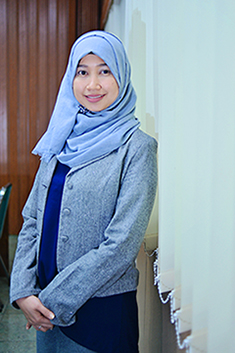ABC Analysis Towards Drug Needs Planning in Pharmacy Installation of RSUD Kota Yogyakarta In 2010
Downloads
Background:Consumption method is one of the standard methods which are used to plan the number of drugs need. This method provides good accuracy of the prediction toward the drug needs planning. However, this does not always provide satisfactory outcomes because this method cannot provide the outlook of the investment value toward each drug. To obtain a plan suitable to the need and purpose, drug planning can be analyzed using several methods; one of them is ABC analysis which is also known also as Pareto or Pareto Law 80/20, a method used in logistic management to classify goods into three based on the investment value, namely A with 75-80%, B with 15-20%, and C with 5-10%. Objective: To obtain the outlook about the process and the outcomes of the ABC analysis towards drug needs planning in Pharmacy Installation of RSUD Kota Yogyakarta in 2010. Methods: The data were collected by collecting and observing the secondary data in 2010, as well as carrying out some deep interviews to some related correspondences. Results: This research showed that the planning process is carried out by the Pharmacist in pharmacy supply sub-division and the correction carried out by the head of the hospital Pharmacy. Moreover, in the hospital there was no special planner team to plan the need of the drug, and there was no involvement from related parties. Drug item from group A has been prioritized. Conclusion:The planning that has been carried out so far was effective and efficient, as can be seen from the planning appropriateness with the highest occurring disease pattern in the hospital from each service unit.
Clevert, D. A., Stickel, M., Jung, E. M., Reiser, M., Rupp, N. (2007). Cost Analysis in Interventional Rradiology--A Tool to Optimize Management Costs. European Journal of Radiology; 61; 144-149.
Departemen Kesehatan RI (Depkes RI). (2006). Standar Pelayanan Farmasi di Rumah Sakit. Jakarta: Direktorat Jenderal Bina Kefarmasian dan Alat Kesehatan.
Departemen Kesehatan RI (Depkes RI). (2008). Pedoman Pengelolaan Perbekalan Farmasi di Rumah Sakit, Direktorat Jenderal Bina Kefarmasian dan Alat Kesehatan Departemen Kesehatan RI Bekerjasama dengan Japan International Cooperation Agency. Jakarta: Departemen Kesehatan RI.
Halloway, K. & Green, T. (2003). Drug and Therapeutics Committees. Arlington: WHO Management Sciences for Health.
Hartono, J. P. (2007). Analisis Proses Perencanaan Kebutuhan Obat Publik untuk Pelayanan Kesehatan Dasar (PKD) di Puskesmas Se Wilayah Kerja Dinas Kesehatan Kota Tasikmalaya, Tesis; Magister Ilmu Kesehatan Masyarakat Konsentrasi Administrasi Kebijakan Kesehatan Program Pascasarjana Universitas Diponegoro, Semarang.
Maimun, A. (2008). Perencanaan Obat Antibiotik Berdasarkan Kombinasi Metode Konsumsi Dengan Analisis ABC dan Reorder Point Terhadap Nilai Persediaan dan Turn Over Ratio di Hospital Pharmacy RS Darul Istiqomah Kaliwungu Kendal. Tesis; Magister Ilmu Kesehatan Masyarakat Konsentrasi Administrasi Rumah Sakit Program Pascasarjana Universitas Diponegoro, Semarang.
Quick, J. D., Rankin, J. R., Laing, R. O. & O'Connor, R. W. (1997). Managing Drug Supply: The Selection, Procurement, Distribution and Use of Pharmaceuticals (Fourth Edition). West Hartford: Kumarian Press.
RSUD Kota Yogyakarta. (2010). Buku Profil Rumah Sakit Umum Daerah Kota Yogyakarta Tahun 2009. Yogyakarta: RSUD Kota Yogyakarta.
Suciati, S., & Adisasmito, B. (2006). Analisis Perencanaan Obat berdasarkan ABC Indeks Kritis di Instalasi Farmasi. Jurnal Manajemen Pelayanan Kesehatan; 09; 19-26.
Sukminingrum, N. (2006). Evaluasi Perencanaan dan Penggunaan Obat di Rumah Sakit Universiti Sains Malaysia Tesis; Magister Ilmu Kesehatan Masyarakat Minat Utama Manajemen Rumah Sakit Program Pascasarjana Universitas Gadjah Mada, Yogyakarta.
WHO. (2002). Buku Panduan Peserta Pelatihan Pengelolaan Obat pada Divisi Kesehatan dan Perkembangan Anak Genewa (terjemahan). Jakarta: Badan POM RI.
1. The copyright of this journal belongs to the Editorial Board and Journal Manager with the author's knowledge, while the moral right of the publication belong to the author.
2. The formal legal aspect of journal publication accessibility refers to the Creative Commons Attribution-Non-Commercial-Share Alike (CC BY-NC-SA), which implies that the publication can be used for non-commercial purposes in its original form.
3. Every publication (print/electronic) is open access for educational, research, and library purposes. In addition to the objectives mentioned above, the editorial board is not responsible for copyright infringement


.jpg)















